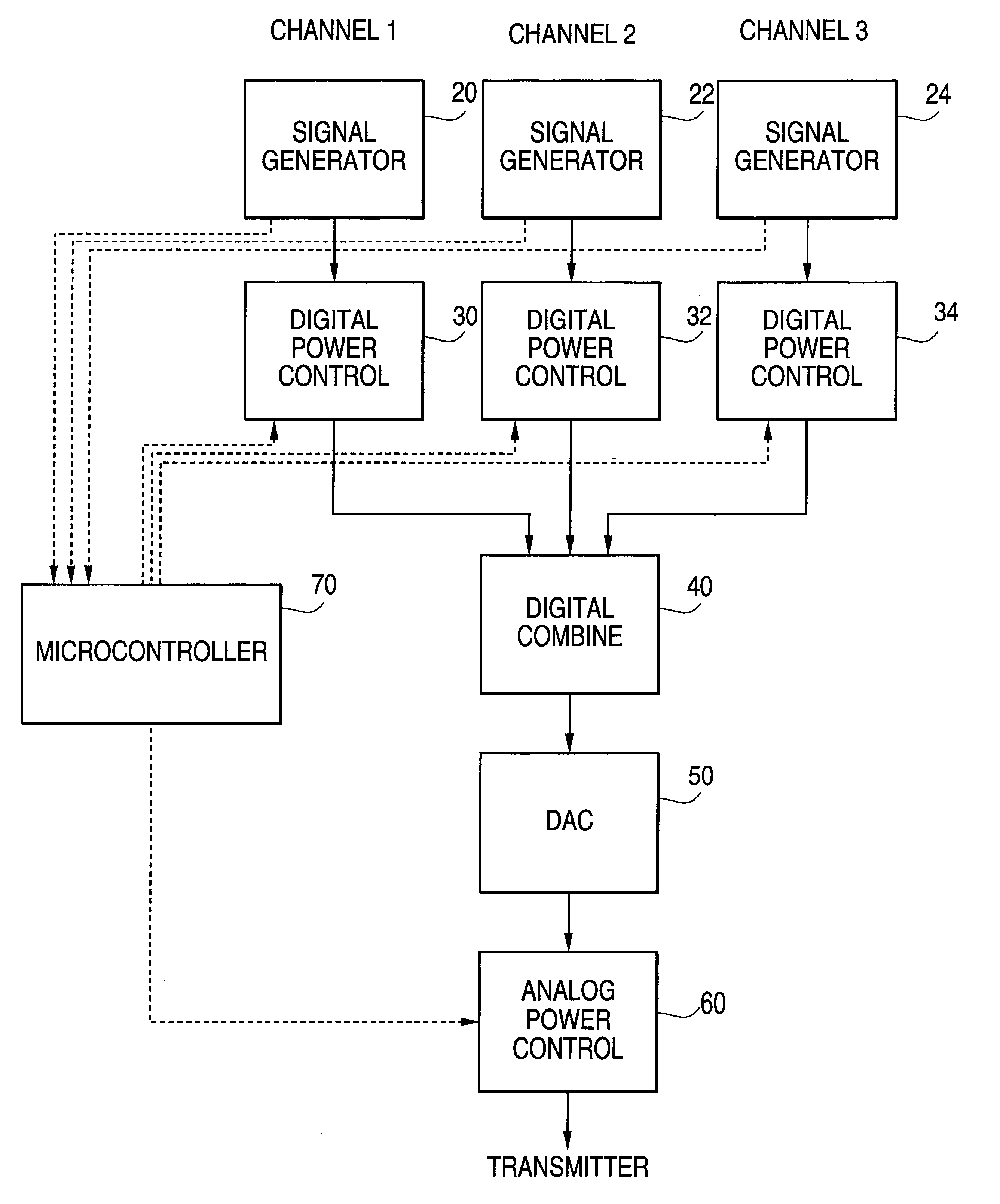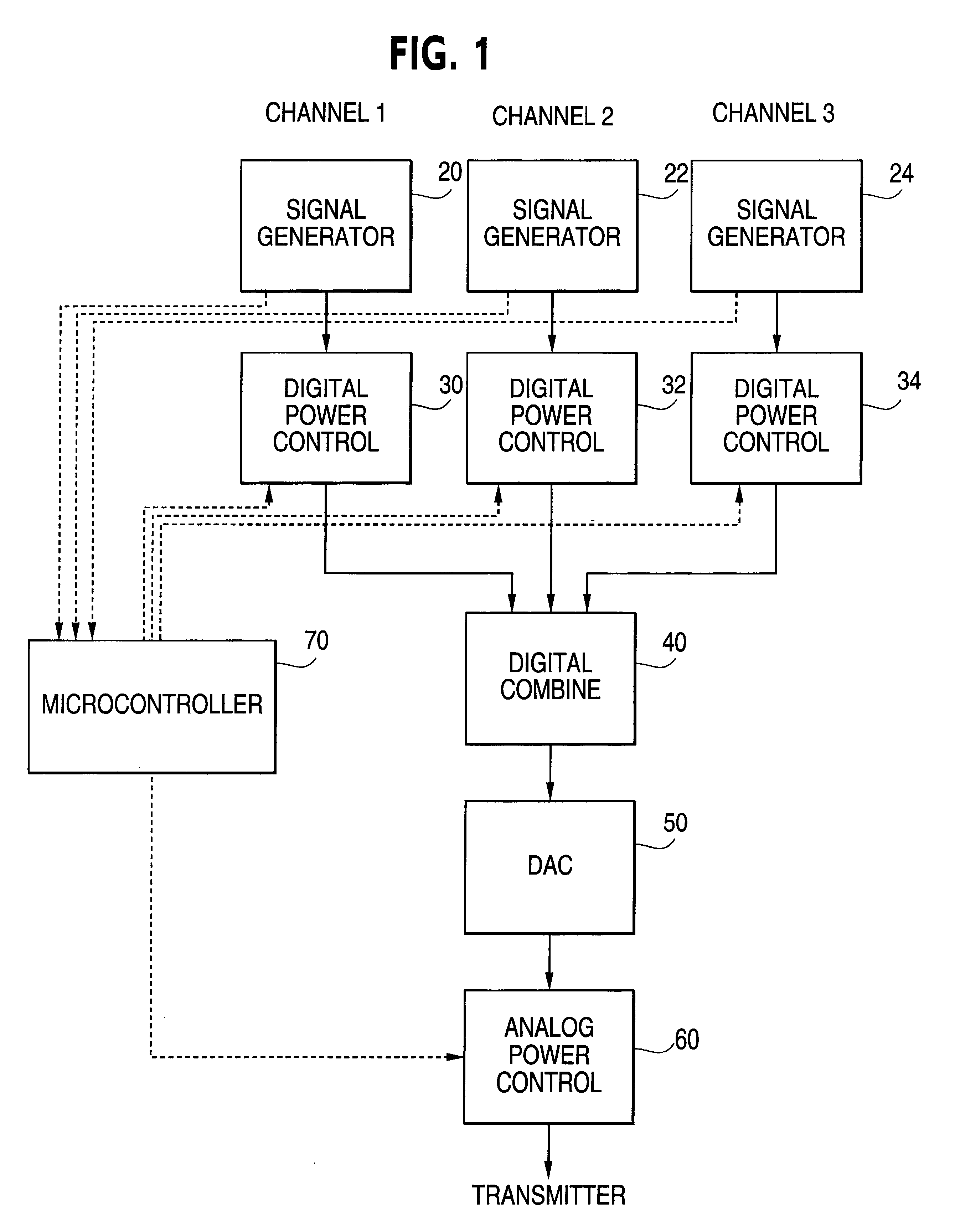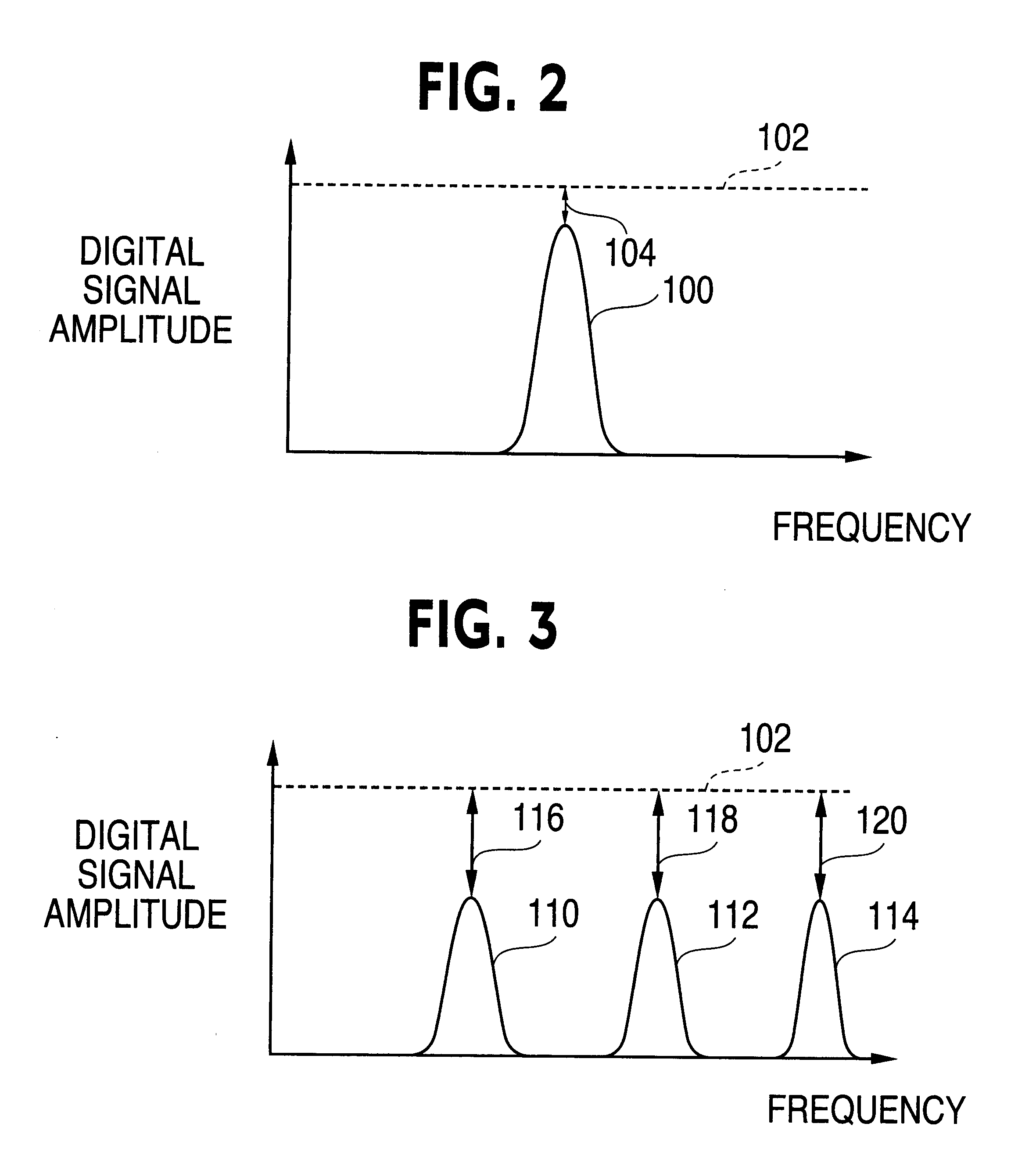Wideband multicarrier power control for a cellular PCS basestation tranmitter
a multi-carrier, wideband technology, applied in power management, diversity/multi-antenna systems, wireless communication, etc., can solve the problems of reducing the signal-to-noise ratio of the dac, unsatisfactory emissions produced by the transmitter, and reducing the accuracy of the da
- Summary
- Abstract
- Description
- Claims
- Application Information
AI Technical Summary
Benefits of technology
Problems solved by technology
Method used
Image
Examples
Embodiment Construction
Turning now to the drawings and referring initially to FIG. 1, a block diagram of one embodiment of the invention is shown. The diagram shows a transmitter system in which multiple digital signals are generated on separate channels for input to a digital to analog converter (DAC) 50. Digital power control circuits 30, 32, and 34 adjust the amplitude of the digital signals before input to the DAC 50 to drive the DAC as close to full-scale as possible without clipping the signal. Analog power control circuit 60 adjusts the amplitude of the analog output from the DAC 50 to produce a signal at the transmitter with sufficient power for transmission. Microcontroller 70 controls the power control circuits to achieve the optimum operation of the DAC (i.e. as close to full-scale as possible without clipping the signal) for the number of channels active at any given time.
A digital signal is generated by signal generator 20, and input to digital power control circuit 30. Similarly, signal gene...
PUM
 Login to View More
Login to View More Abstract
Description
Claims
Application Information
 Login to View More
Login to View More - R&D
- Intellectual Property
- Life Sciences
- Materials
- Tech Scout
- Unparalleled Data Quality
- Higher Quality Content
- 60% Fewer Hallucinations
Browse by: Latest US Patents, China's latest patents, Technical Efficacy Thesaurus, Application Domain, Technology Topic, Popular Technical Reports.
© 2025 PatSnap. All rights reserved.Legal|Privacy policy|Modern Slavery Act Transparency Statement|Sitemap|About US| Contact US: help@patsnap.com



